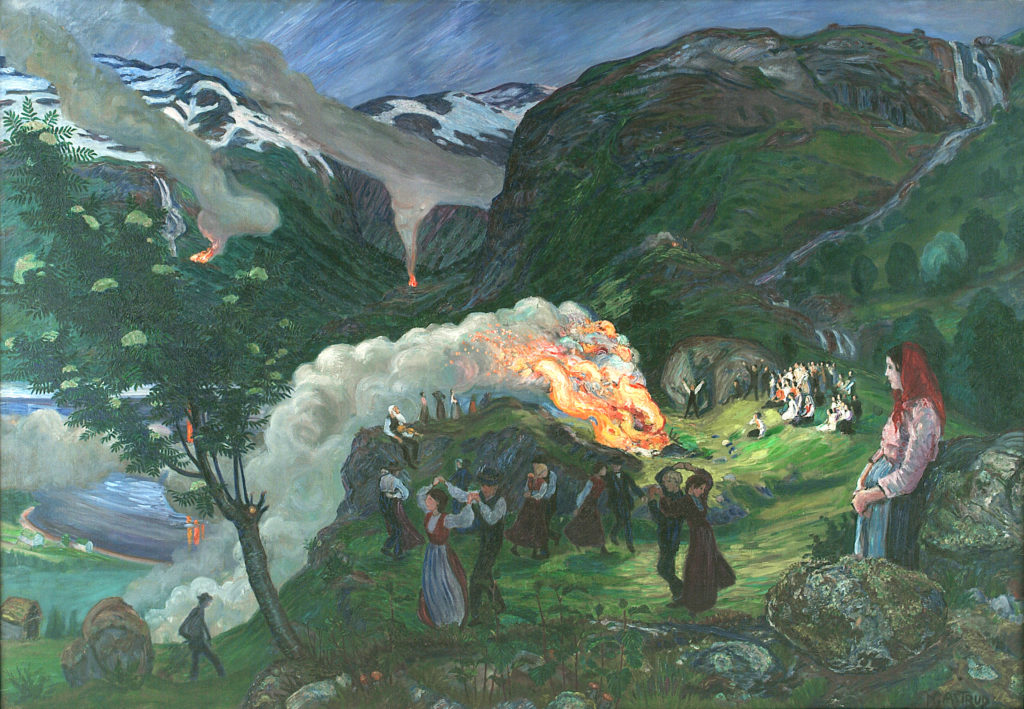Midsummer Night Bonfire

Midsummer bonfires and Midsummer celebrations are among the motifs that Nikolai Astrup (1880-1928) devoted considerable attention to, and which art history has posthumously deemed among the most important works of his artistic production.
He returned to these motifs repeatedly, both in paintings and woodcuts. And Prize Bonfire in particular can be said to be the most monumental and accomplished versions among them.
Astrup hailed from a family of civil servants and his father was a priest. The relationship between father and son was at times full of contradiction and conflict, owing largely to the fact that Astrup was never really able to accept the strict Christian atmosphere in the home.
He was more drawn more towards a nature mysticism and a hedonistic symbolism and tradition, as we can see this expressed in Prize Bonfire. He has written about what an indelible impression a Midsummer celebration made on him as a child:
“I had the impression that this bonfire practice was something sinful, ugly, something that was carried out in the green semi-darkness—something pagan—and this was intensified even more by the jealousy that burrowed in my breast—because the other children were allowed to join in and I had to stand on the outside. And that is how I saw my little fellow sufferer and the ugly, yellow fire that did not light up the summer night, but beckoned and enticed me precisely because it was surrounded by mysticism, ungodliness and raw hedonism. And in the end I dared to mingle among the sinful, but the little girl remained standing there watching with her pale countenance and large, black eyes that irresistibly drew the fire into them—that is how I originally carried the image within me.”
The painting can be seen at KODE in Bergen.
OWG